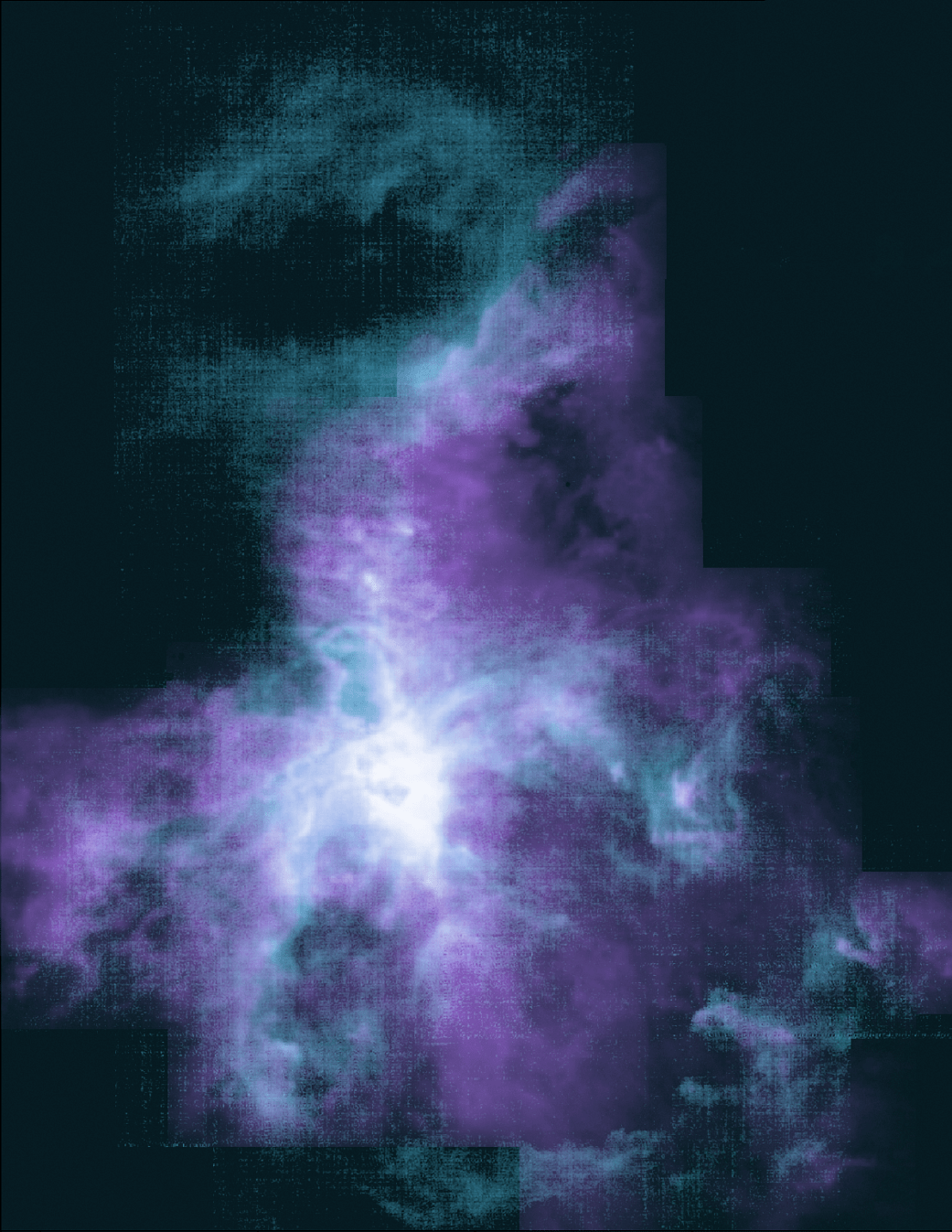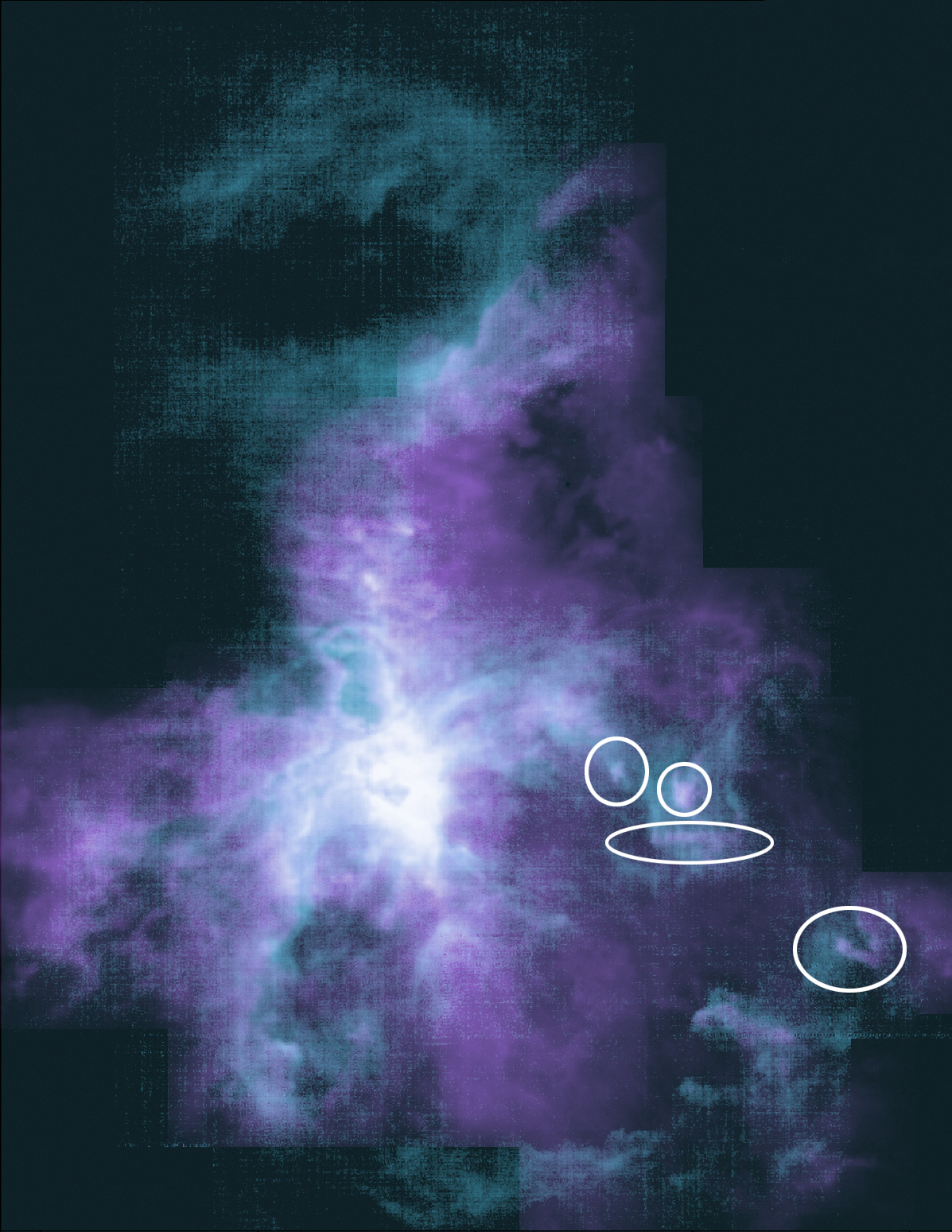In the closest stellar nursery to Earth, the Orion Nebula, an enormous bubble that cleared away star-seeding material is now showing signs of birthing stars along its edges within tiny, densely compacted clouds. These observations of Orion offer scientists new insights into how the stars we see today can affect new generations of stars in the future.
The new research combines results from NASA’s flying observatory the Stratospheric Observatory for Infrared Astronomy, SOFIA, and the Institute of Radio and Millimeter Astronomy’s, IRAM, 30-meter radio telescope in Pica Veleta, Spain and are published in Astronomy and Astrophysics.
Last year, SOFIA results first showed the Orion Nebula’s bubble forming. A young star at the center called Theta1 Orionis C began generating a 31,000 mph wind that blew away the material, preventing stellar siblings from forming nearby. Initially it was unclear if the powerful wind would facilitate or hinder star formation as the compacted material was pushed to the bubble’s edges.
The follow-up research shows that there are dense clouds along the edges that have prime conditions for new stars, and in fact one newborn, low-mass star already seems to be forming in one of them. Some of the other new clouds may be temporary or easily dissipated by the wind and may never reach maturity.
Studies of how stars affect the birth of other stars, referred to as “feedback,” further our understanding of the complex processes that can slow the birth of future stellar generations in some areas while enhancing it in others.
SOFIA, the Stratospheric Observatory for Infrared Astronomy, is a Boeing 747SP jetliner modified to carry a 106-inch diameter telescope. It is a joint project of NASA and the German Aerospace Center, DLR. NASA’s Ames Research Center in California’s Silicon Valley manages the SOFIA program, science and mission operations in cooperation with the Universities Space Research Association headquartered in Columbia, Maryland, and the German SOFIA Institute (DSI) at the University of Stuttgart. The aircraft is maintained and operated from NASA’s Armstrong Flight Research Center Hangar 703, in Palmdale, California.


























